Archiv für die 'Blog' Kategorie
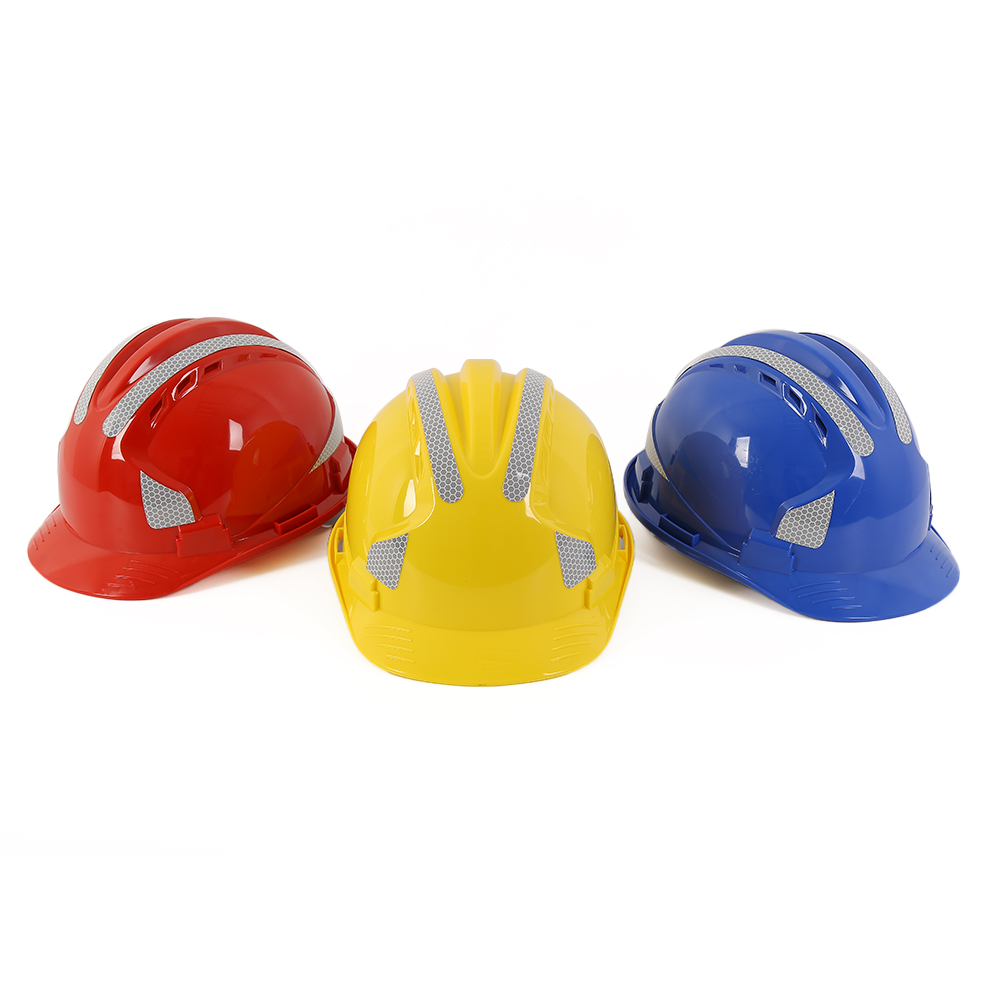
Die Wahl des richtigen Industrieschutzhelms ist entscheidend für einen wirksamen Schutz am Arbeitsplatz. Hier sind einige Faktoren, die bei der Auswahl eines Industrieschutzhelms zu beachten sind:
Sicherheitsstandards:
Vergewissern Sie sich, dass der Helm den einschlägigen Sicherheitsnormen und -vorschriften in Ihrer Region entspricht. Die Normen können variieren, aber zu den gängigen gehören ANSI/ISEA Z89.1 (USA) oder EN 397 (Europa).
Typ und Klasse:
Bestimmen Sie den spezifischen Helmtyp und die Helmklasse, die Sie für Ihre Arbeit benötigen. Zum Beispiel Klasse E, G oder C für elektrischen Schutz und Typ I oder II für Schlagschutz.
Material:
Helme werden in der Regel aus hochdichtem Polyethylen (HDPE) oder Acrylnitril-Butadien-Styrol (ABS) hergestellt. HDPE ist leicht, während ABS eine bessere Stoßfestigkeit bietet. Wählen Sie ein Material, das den spezifischen Gefahren an Ihrem Arbeitsplatz entspricht.
Aufhängungssystem:
Das Aufhängungssystem im Inneren des Helms spielt eine entscheidende Rolle für den Komfort und die Stoßdämpfung. Achten Sie auf ein Aufhängungssystem, das sich leicht einstellen lässt, um einen sicheren und bequemen Sitz zu gewährleisten.
Belüftung:
Berücksichtigen Sie den Grad der erforderlichen Belüftung. Belüftete Helme tragen dazu bei, dass der Kopf in heißen Umgebungen kühl bleibt. Besteht jedoch die Gefahr von Flüssigkeitsspritzern oder geschmolzenem Metall, kann ein nicht belüfteter Helm besser geeignet sein.
Zubehör:
Für manche Arbeiten ist zusätzliches Zubehör erforderlich, z. B. Gesichtsschutz, Ohrenschützer oder ein Kinnriemen. Vergewissern Sie sich, dass der von Ihnen gewählte Helm das erforderliche Zubehör aufnehmen kann.
Größe und Passform:
Ein gut sitzender Helm ist für einen wirksamen Schutz unerlässlich. Helme sind in der Regel in verschiedenen Größen erhältlich, und das Aufhängungssystem sollte einstellbar sein, um einen sicheren Sitz zu gewährleisten. Führen Sie einen Passformtest durch, um sicherzustellen, dass der Helm bequem auf dem Kopf sitzt, ohne zu eng oder zu locker zu sein.
Gewicht:
Achten Sie auf das Gewicht des Helms, vor allem, wenn Sie ihn über längere Zeit tragen wollen. Ein leichter Helm kann die Belastung des Nackens verringern und den Gesamtkomfort verbessern.
Langlebigkeit:
Beurteilen Sie die Haltbarkeit des Helms unter Berücksichtigung der Anforderungen des Arbeitsumfelds. Helme sollten Stößen, Witterungsbedingungen und eventuell vorhandenen Chemikalien standhalten.
Sichtbarkeit:
In Situationen, in denen die Sichtbarkeit von entscheidender Bedeutung ist, z. B. bei schlechten Lichtverhältnissen, sollten Sie Helme mit gut sichtbaren Merkmalen, reflektierenden Materialien oder leuchtenden Farben in Betracht ziehen.
Benutzerfreundlichkeit:
Der Komfort des Benutzers ist entscheidend dafür, dass der Helm konsequent getragen wird. Achten Sie auf Merkmale wie gepolsterte Schweißbänder und ergonomisches Design.
Zeitplan für die Ersetzung:
Legen Sie einen Zeitplan für den regelmäßigen Austausch von Helmen fest, insbesondere wenn sie Anzeichen von Verschleiß oder Beschädigungen aufweisen oder wenn sie einem starken Aufprall ausgesetzt waren.
Wenn Sie diese Faktoren sorgfältig berücksichtigen, können Sie einen Industrieschutzhelm auswählen, der den notwendigen Schutz für die spezifischen Gefahren an Ihrem Arbeitsplatz bietet. Beachten Sie bei der Auswahl und Verwendung von Schutzhelmen stets die Richtlinien und Sicherheitsvorschriften des Herstellers.
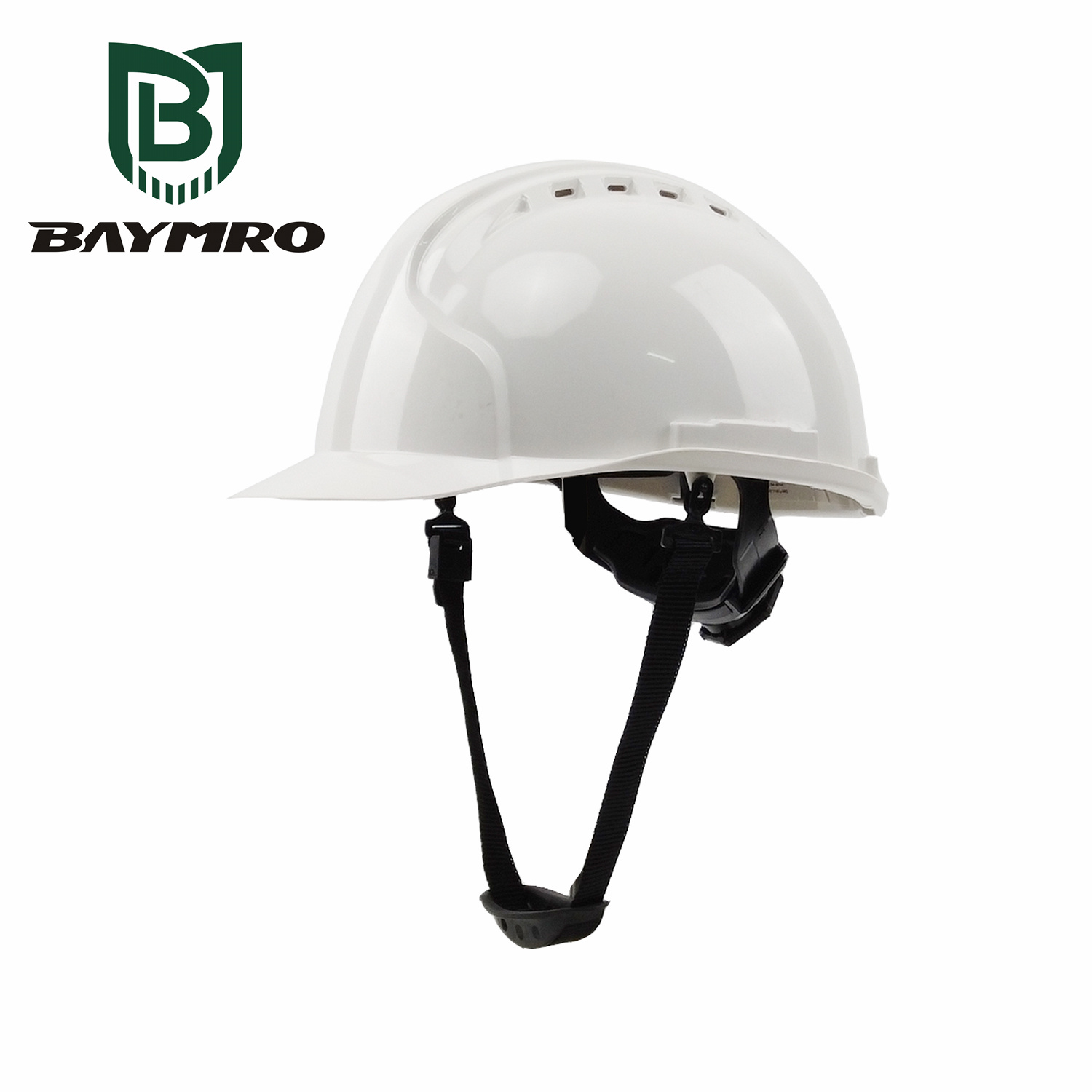
Helmets are essential protective gear in various activities, and their design can significantly impact both safety and comfort. One crucial distinction lies in whether the helmet is ventilated or non-ventilated. Here’s how you can differentiate between the two:
1. Ventilation Structure:
Ventilated Helmets: These helmets are characterized by well-designed ventilation holes or channels, strategically placed to facilitate proper airflow. Ventilation points can be found on the top, sides, or rear of the helmet, aiding in heat dissipation and reducing the temperature inside the helmet for enhanced comfort.
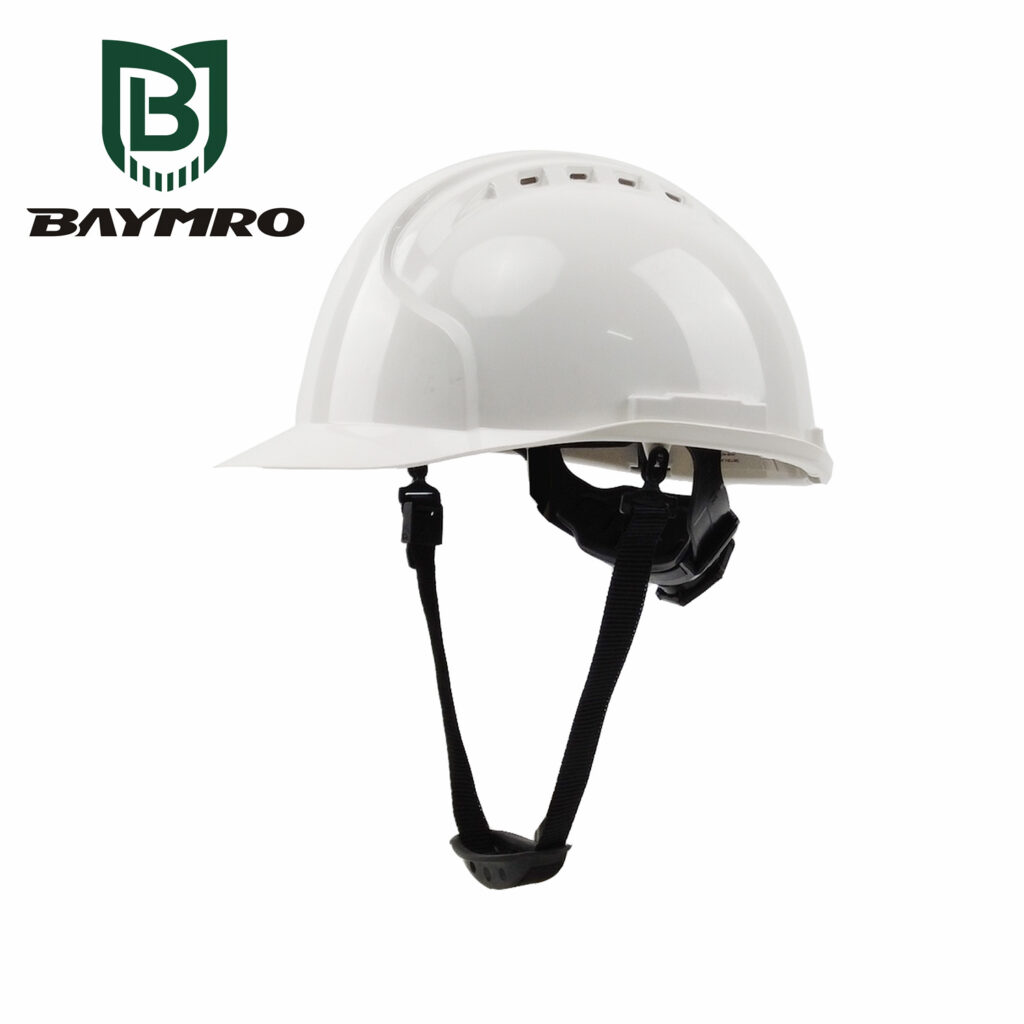
Non-Ventilated Helmets: Conversely, non-ventilated helmets typically lack prominent ventilation holes, focusing more on providing overall head protection. These helmets might be more suitable for colder environments or situations where ventilation is not a primary concern.
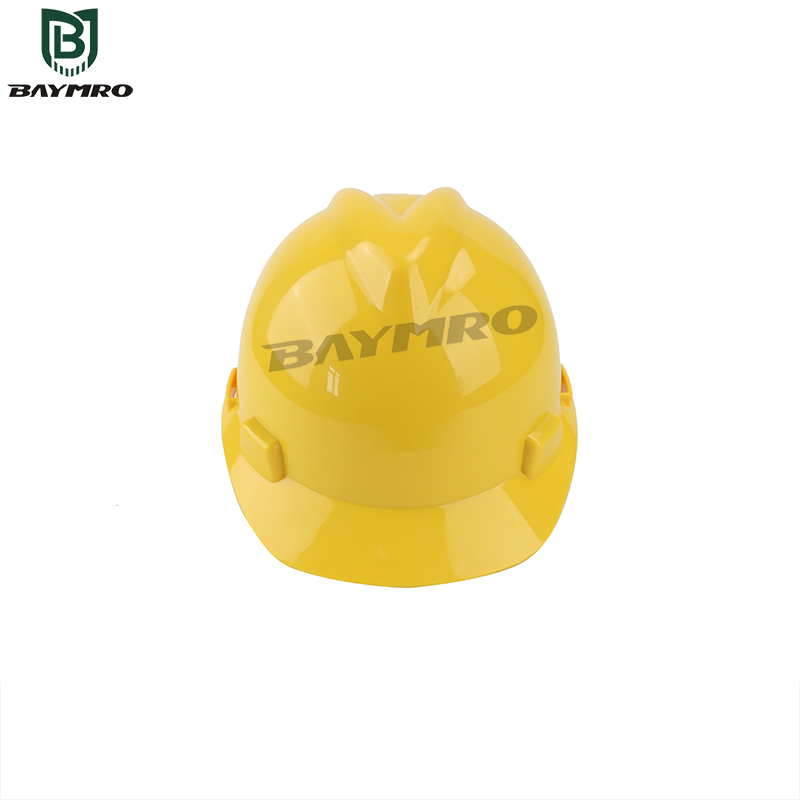
2. Comfort:
Ventilated Helmets: Due to their ventilation design, these helmets excel in keeping the wearer’s head cool, especially in hot weather. The airflow helps dissipate heat, minimizing sweat accumulation and improving overall comfort.
Non-Ventilated Helmets: While these helmets prioritize comprehensive head protection, they may lead to a feeling of warmth or discomfort, particularly in hot conditions.
3. Intended Use:
Ventilated Helmets: Ideal for activities or occupations requiring prolonged use in hot environments, such as construction sites or sports events.
Non-Ventilated Helmets: Suited for situations demanding higher overall head protection, such as hazardous construction work or motorcycle riding.
Choosing between a ventilated and non-ventilated helmet depends on your specific needs and the environment in which you’ll be using it. Consider the following factors to make an informed decision:
Environmental Conditions: If you anticipate working or engaging in activities in hot weather, a ventilated helmet may provide better comfort.
Safety Requirements: Jobs or activities with a higher risk of head injuries may necessitate a non-ventilated helmet for maximum protection.
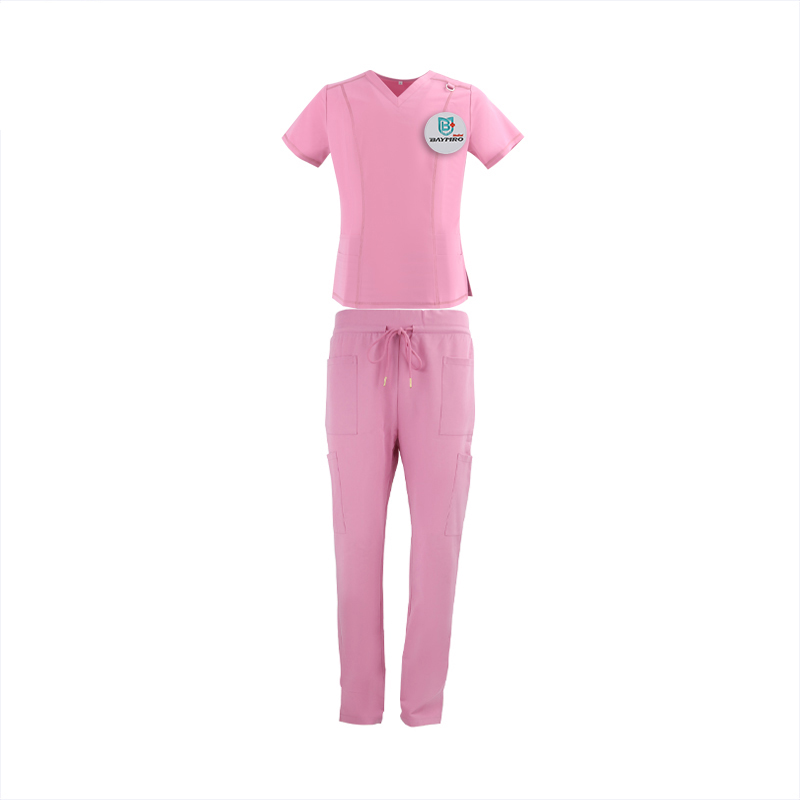
Einleitung:
In the ever-evolving landscape of healthcare, the demand for reliable and top-notch medical apparel is paramount. BAYMRO, a distinguished name in the Chinese market, stands out as a leading supplier of medical scrubs, catering to the diverse needs of healthcare professionals globally.
Quality Assurance:
At BAYMRO, we prioritize quality assurance to ensure that our medical scrubs meet and exceed international standards. Our scrubs are crafted from premium materials, blending comfort, durability, and functionality. Whether you’re a medical practitioner, nurse, or part of a healthcare support team, our scrubs are designed to withstand the rigors of the profession while providing unparalleled comfort throughout your demanding workday.
Variety and Customization:
Understanding the varied preferences within the medical community, BAYMRO offers a wide range of medical scrubs in different styles, colors, and sizes. From classic solid colors to contemporary designs, we cater to the diverse tastes of healthcare professionals. Additionally, our customization services allow you to personalize your scrubs with logos, names, and specific color preferences, ensuring a unique and professional appearance.
Innovative Fabric Technology:
BAYMRO prides itself on staying ahead of the curve by incorporating innovative fabric technologies into our medical scrubs. Our scrubs are made from breathable and moisture-wicking fabrics, promoting a comfortable and hygienic environment for medical professionals. The fabrics are also designed to resist stains, ensuring a clean and polished appearance even in the face of challenging situations.
Stringent Quality Control:
To guarantee the highest standards, BAYMRO implements stringent quality control measures at every stage of the manufacturing process. From fabric selection to the final product, our dedicated team of quality control experts ensures that each medical scrub that bears the BAYMRO name is a testament to excellence.
Competitive Pricing and Timely Delivery:
BAYMRO is committed to providing cost-effective solutions without compromising on quality. Our competitive pricing structure makes high-quality medical scrubs accessible to a wide range of healthcare professionals. Furthermore, our efficient logistics and supply chain management ensure timely delivery to our international clients, facilitating a seamless procurement process.
Global Reach:
With a focus on international markets, BAYMRO has established a robust global distribution network. Our medical scrubs are readily available to buyers worldwide, and our customer service team is proficient in catering to the specific requirements of our international clientele.
Schlussfolgerung:
When it comes to sourcing premium medical scrubs from China, BAYMRO is the trusted partner for discerning healthcare professionals. With a commitment to quality, customization, and innovation, BAYMRO ensures that medical practitioners around the world are equipped with the finest apparel to excel in their crucial roles. Choose BAYMRO for excellence in medical scrubs and experience the perfect blend of comfort, style, and functionality.
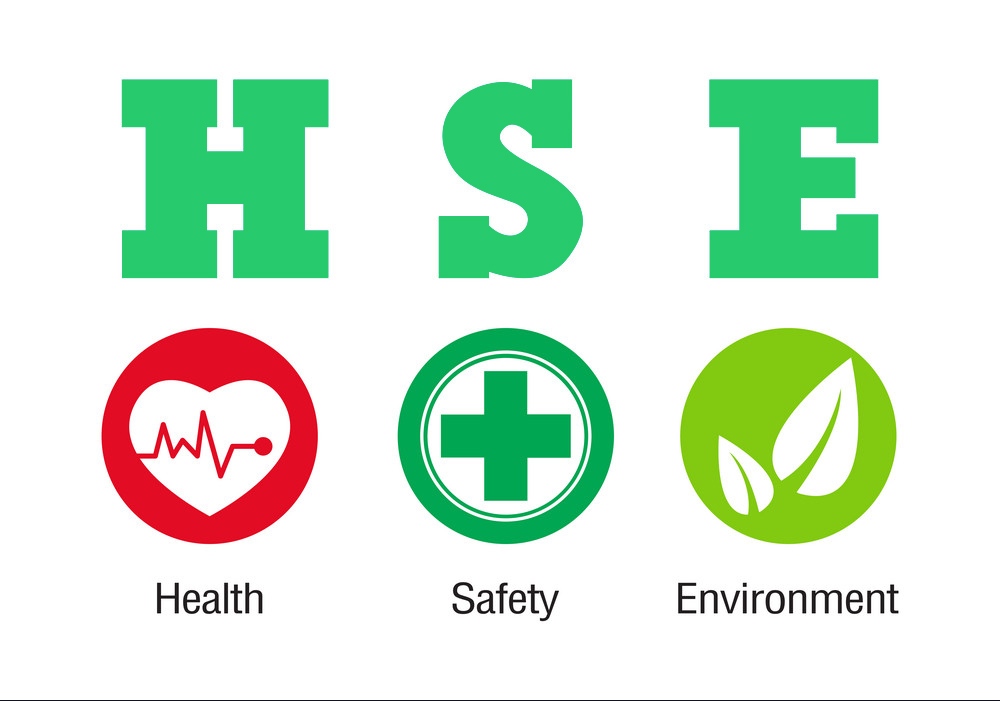
Einleitung:
Gesundheit, Sicherheit und Umwelt (GSU) sind ein entscheidender Aspekt der Geschäftstätigkeit eines jeden Unternehmens, unabhängig von seiner Größe oder Branche. HSE umfasst ein breites Spektrum an Praktiken, Richtlinien und Verfahren, die das Wohlergehen der Mitarbeiter sichern, die Umwelt schützen und die allgemeine Nachhaltigkeit des Unternehmens gewährleisten sollen. Dieser Leitfaden gibt einen Überblick über die HSE-Grundsätze und -Praktiken und zeigt, wie sie effektiv umgesetzt werden können.
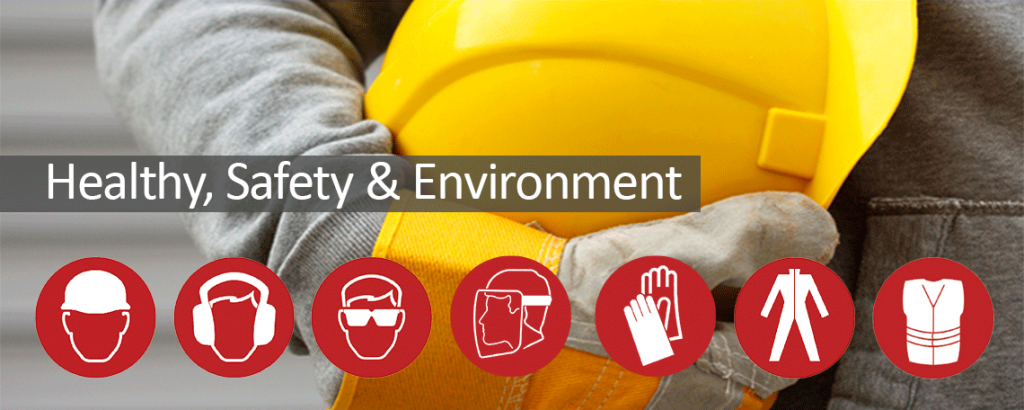
Abschnitt 1: Verständnis von HSE
1.1. Was ist HSE?
HSE bezieht sich auf einen ganzheitlichen Ansatz für das Management von Gesundheits-, Sicherheits- und Umweltrisiken innerhalb einer Organisation. Es geht darum, Risiken zu identifizieren, zu bewerten und zu mindern, um Unfälle, Verletzungen, Krankheiten und Umweltschäden zu vermeiden.
1.2. Warum ist HSE wichtig?
HSE ist aus mehreren Gründen von entscheidender Bedeutung:
Schutz des menschlichen Lebens und Wohlbefindens.
Verringerung der Unfälle und der damit verbundenen Kosten.
Einhaltung der rechtlichen und regulatorischen Anforderungen.
Verbesserung des Rufs einer Organisation.
Soziale Verantwortung demonstrieren.
Verringerung der Umweltauswirkungen.
Abschnitt 2: Kernbestandteile von HSE
2.1. Gesundheit (H):
Gesundheit am Arbeitsplatz: Förderung der Gesundheit der Mitarbeiter, einschließlich des körperlichen und geistigen Wohlbefindens.
Gesundheitsprüfungen: Regelmäßige Vorsorgeuntersuchungen und Risikobewertungen für Arbeitnehmer.
Gesundheitsförderung: Ermutigung zu einer gesunden Lebensweise und Bereitstellung von Wellness-Programmen.
2.2. Sicherheit (S):
Gefahrenerkennung und Risikobewertung: Identifizierung potenzieller Gefahren am Arbeitsplatz und Bewertung ihrer Risiken.
Sicherheitsverfahren: Entwicklung und Umsetzung von Sicherheitsprotokollen, einschließlich Notfallplänen.
Ausbildung: Durchführung von Sicherheitsschulungen für Mitarbeiter aller Ebenen.
Meldung und Untersuchung von Zwischenfällen: Einrichtung eines Systems zur Meldung, Untersuchung und Auswertung von Vorfällen.
2.3. Umwelt (E):
Umweltverträglichkeitsprüfungen: Bewertung der Auswirkungen von Tätigkeiten auf die Umwelt.
Umweltmanagementsysteme (EMS): Einführung und Aufrechterhaltung von Systemen zur Kontrolle und Verringerung der Umweltauswirkungen.
Einhaltung von Umweltgesetzen und -vorschriften: Sicherstellung, dass die Organisation alle geltenden Gesetze einhält.
Initiativen zur Nachhaltigkeit: Förderung nachhaltiger Praktiken und Reduzierung des Ressourcenverbrauchs.
Abschnitt 3: Implementierung eines HSE-Programms
3.1. HSE-Politik:
Entwickeln Sie eine klare und umfassende GSU-Politik, in der das Engagement des Unternehmens für Gesundheit, Sicherheit und Umwelt dargelegt wird.
Kommunikation der Politik an alle Mitarbeiter und Interessengruppen.
3.2. HSE-Management-System:
Einführung eines strukturierten Systems für das HSE-Management, z. B. nach ISO 45001 (Arbeitsschutzmanagementsysteme) und ISO 14001 (Umweltmanagementsysteme).
Festlegung von Zuständigkeiten und Verantwortlichkeiten innerhalb des Systems.
3.3. Risikobewertung:
Identifizieren Sie potenzielle Risiken für Gesundheit, Sicherheit und Umwelt.
Priorisierung der Risiken nach Schweregrad und Wahrscheinlichkeit.
Entwicklung von Strategien zur Abschwächung oder Beseitigung von Risiken.
3.4. Schulung und Sensibilisierung:
Durchführung von GSU-Schulungen für alle Mitarbeiter.
Sicherstellen, dass die Mitarbeiter ihre Aufgaben und Verantwortlichkeiten bei der Einhaltung der GSU-Standards verstehen.
3.5. Management von Vorfällen:
Festlegung klarer Verfahren für die Meldung und Untersuchung von Vorfällen.
Nutzen Sie Daten über Vorfälle, um Trends zu erkennen und Präventivmaßnahmen zu ergreifen.
3.6. Vorbereitung auf den Notfall:
Entwicklung und regelmäßige Prüfung von Notfallplänen.
Stellen Sie sicher, dass die Mitarbeiter mit den Notfallverfahren vertraut sind.
Abschnitt 4: Überwachung und kontinuierliche Verbesserung
4.1. Leistungsmetriken:
Definition von Leistungsindikatoren (KPIs) zur Messung der HSE-Leistung.
Regelmäßige Erfassung und Analyse von Daten zur Bewertung der Fortschritte.
4.2. Audits und Inspektionen:
Durchführung regelmäßiger interner und externer Audits zur Bewertung der Einhaltung der Vorschriften und der Wirksamkeit.
Behandlung von Nichtkonformitäten und Durchführung von Abhilfemaßnahmen.
4.3. Feedback und Kommunikation:
Ermutigen Sie Ihre Mitarbeiter zu Feedback und Vorschlägen für HSE-Verbesserungen.
Kommunikation von HSE-Erfolgen und -Herausforderungen in der gesamten Organisation.
4.4. Kontinuierliche Verbesserung:
Nutzen Sie Daten und Feedback, um verbesserungswürdige Bereiche zu ermitteln.
Aktualisierung von Richtlinien und Verfahren, um die HSE-Leistung zu verbessern.
Abschnitt 5: Einhaltung rechtlicher und behördlicher Vorschriften
5.1. Bleiben Sie auf dem Laufenden:
Halten Sie sich über die einschlägigen Gesetze und Vorschriften auf dem Laufenden.
Überwachen Sie Veränderungen und passen Sie die Strategien und Verfahren entsprechend an.
5.2. Berichterstattung über die Einhaltung der Vorschriften:
Gewährleistung einer rechtzeitigen und genauen Berichterstattung an die zuständigen Behörden.
Führen von Aufzeichnungen über Tätigkeiten im Zusammenhang mit der Einhaltung von Vorschriften.
Abschnitt 6: Schlussfolgerung
Die Umsetzung eines soliden GSU-Programms ist für das Wohlergehen der Mitarbeiter, den Schutz der Umwelt und den Gesamterfolg eines Unternehmens unerlässlich. Indem sie dem Gesundheits-, Sicherheits- und Umweltschutz Priorität einräumen, können Unternehmen Risiken mindern, Kosten senken, ihren Ruf verbessern und zu einer nachhaltigeren Zukunft beitragen.
Denken Sie daran, dass GSU eine ständige Verpflichtung ist, die eine regelmäßige Bewertung, Anpassung und Verbesserung erfordert. Kontinuierliche Wachsamkeit und eine starke Unternehmenskultur der Sicherheit und Verantwortung sind für das Erreichen und Aufrechterhalten von HSE-Exzellenz unerlässlich.

Construction sites are dynamic, challenging environments where a myriad of hazards can threaten the well-being of workers. Safety shoes are a crucial part of personal protective equipment (PPE) that can mitigate these risks, offering protection for one of the most vulnerable parts of the body: the feet. In this article, we’ll explore the factors you should consider when selecting the right safety shoes for construction sites.
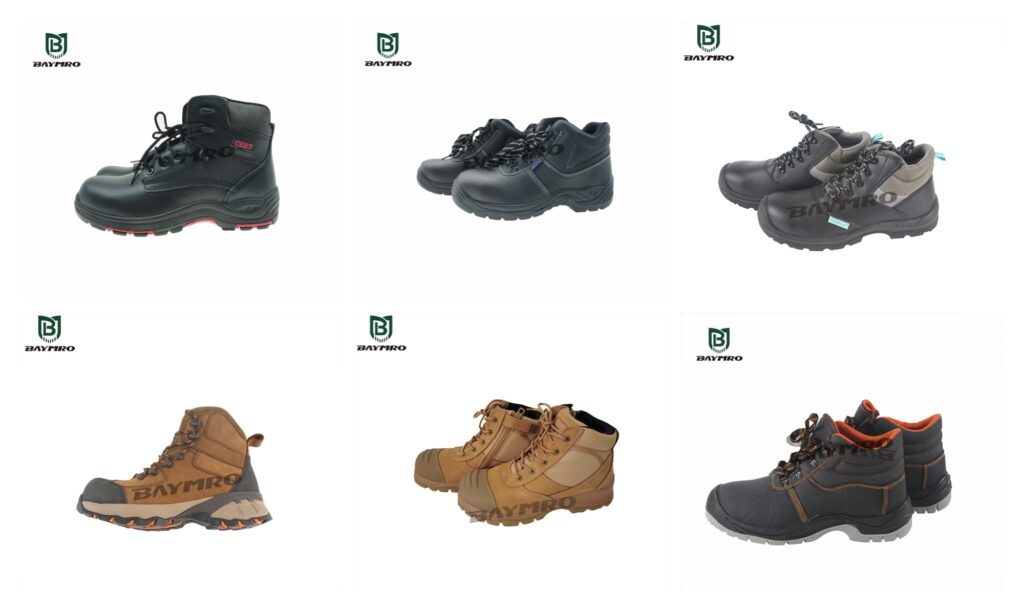
Toe Protection: Steel or Composite?
The first and foremost feature to consider in safety shoes is toe protection. Falling objects, heavy equipment, and compression hazards are common on construction sites. Steel toe caps are a traditional choice, offering robust protection. However, composite toe caps have gained popularity due to their lightweight and non-conductive properties, making them suitable for those working near electrical hazards. Choose the type of toe protection that aligns with your specific job requirements.
Slip Resistance
Construction sites are often rife with slippery surfaces, especially in wet or muddy conditions. Slip-resistant outsoles are essential to prevent accidents. Look for shoes with tread patterns designed for grip on a variety of surfaces. ASTM F2413-18, the standard for performance requirements for protective (safety) toe cap footwear, has specific guidelines for slip resistance.
Durchstichfestigkeit
Sharp objects like nails, screws, or debris can pose a puncture risk to your feet. Safety shoes with puncture-resistant midsoles provide an additional layer of protection. These midsoles are often made of materials like Kevlar or steel and can significantly reduce the risk of injury.
Electrical Hazard (EH) Protection
If your work involves electricity, whether directly or indirectly, EH-rated safety shoes are crucial. These shoes are designed to reduce the risk of electrical shock. They feature special insulating materials and construction that prevent electrical currents from passing through the sole into the wearer’s body.
Waterproof and Weatherproof Features
Construction sites are open to the elements, and workers often find themselves dealing with rain, mud, or snow. Waterproof or weatherproof safety shoes keep your feet dry and comfortable, reducing the risk of cold-related injuries. Look for shoes made with waterproof membranes and sealed seams to ensure complete protection.
Ankle Support
High-top or mid-top safety boots can provide additional ankle support and protection, which can be invaluable when navigating uneven terrain or carrying heavy loads. These boots offer stability and reduce the risk of ankle injuries.
Comfort and Fit
Comfort and proper fit are essential for long hours of work. Ill-fitting or uncomfortable safety shoes can lead to fatigue, blisters, and reduced productivity. Make sure your shoes fit well, provide adequate arch support, and have cushioning for comfort. Many brands offer various width options to accommodate different foot shapes.
Dauerhaftigkeit
Construction work is tough on footwear. Look for safety shoes made from high-quality materials and construction techniques. A durable shoe will not only protect your feet but also last longer, saving you money in the long run.
Insulation
If you work in cold conditions, insulated safety shoes are a must. They help keep your feet warm, ensuring comfort and preventing cold-related injuries. Insulated safety shoes are designed to trap heat and maintain a comfortable temperature.
Gewicht
Consider the weight of your safety shoes. If you need to move quickly or frequently climb ladders, lighter safety shoes may be more practical. Balance weight with other protective features to find the right combination for your needs.
Compliance
Ensure that the safety shoes you choose meet the relevant safety standards in your region. For example, in the United States and Canada, safety shoes are subject to standards set by ASTM, ANSI, and CSA. Compliant shoes have been tested to meet specific performance criteria.
In conclusion, choosing the right safety shoes for construction sites is a critical decision that directly impacts your safety and comfort. Assess the specific hazards and working conditions on your construction site, and select safety shoes that offer the necessary protection. Regularly inspect and maintain your safety shoes to ensure they continue to perform effectively and protect your feet throughout your demanding workdays. Prioritize safety, and invest in quality safety shoes to safeguard your most valuable assets—your feet.
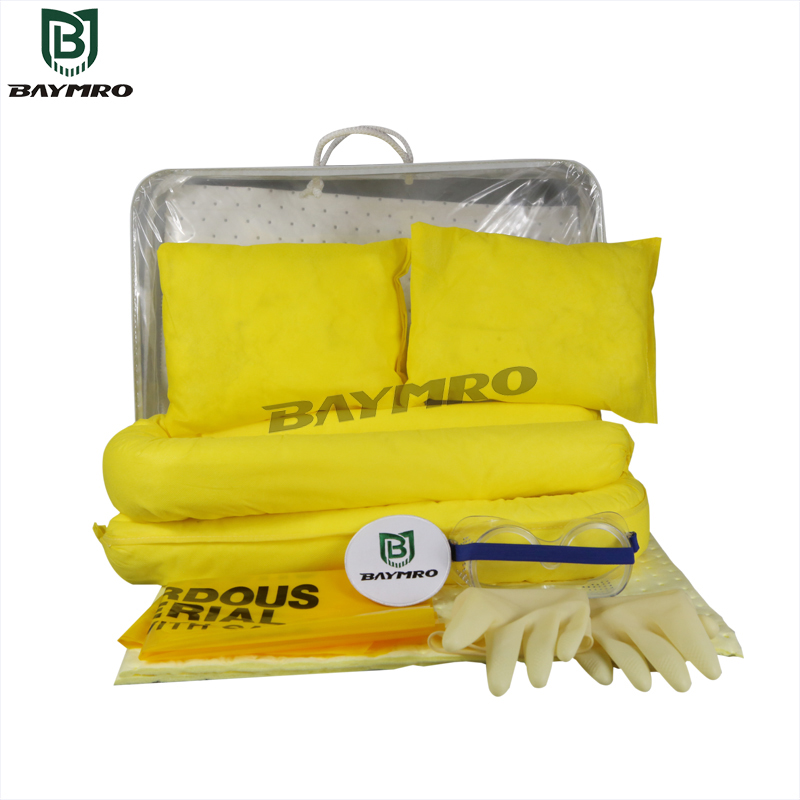
Oil-absorbing cotton, a remarkable material, plays a pivotal role in managing oil spills and controlling oil-based pollutants. This versatile substance is designed to soak up oils and hydrocarbons while repelling water. In this article, we’ll explore how oil-absorbing cotton is made, provide an overview of various adsorbent materials, discuss its extensive range of applications, and consider alternative industrial adsorption materials.
1.How is oil-absorbing cotton made?
- Oil-absorbing cotton is typically produced using hydrophobic materials that have a natural affinity for oils and hydrocarbons while repelling water. Here’s a basic overview of the manufacturing process:
- Material Selection: The primary material used in oil-absorbing cotton is often synthetic, like polypropylene. Polypropylene is cost-effective and efficient at absorbing and retaining oils. Natural materials like cellulose, derived from wood pulp, are also used in some cases, offering a biodegradable and eco-friendly option.
- Fiber Formation: The selected material is processed into fibers that are layered to create a pad or mat. These fibers create a porous structure that allows for efficient absorption of oil.
- Hydrophobic Treatment: Many oil-absorbing cotton products are treated with hydrophobic chemicals or coatings to enhance their oil-absorption capabilities further.
2.Brief Description of Adsorbent Materials
Adsorbent materials can be broadly categorized into three series:
- Oil Absorbent Materials: These materials are specifically designed to absorb oils and hydrocarbons. Oil-absorbing cotton is a prime example, excelling at this task.
- Chemical Adsorbent Material Series: These materials are engineered to absorb a wide range of chemicals and hazardous substances. They are crucial in industrial settings where chemical spills are a concern.
- General Adsorbent Material Series: These materials are versatile and can absorb a variety of liquids, including water, oils, and chemicals. They are commonly used in spill response kits and everyday industrial cleanup.
3.What are the uses of oil-absorbing cotton?
- Oil-absorbing cotton finds a wide range of applications across various industries:
- Environmental Cleanup: Oil-absorbing cotton is crucial for managing oil spills in bodies of water, ensuring that the oil is contained and absorbed without further contaminating the environment.
- Industrial Settings: In manufacturing and industrial facilities, these materials are used to control and clean up oil-based spills that can occur during processes or machinery maintenance.
- Garages and Workshops: Automotive repair shops and garages utilize oil-absorbing cotton to absorb and dispose of oil and fuel spills to maintain a clean and safe working environment.
- Spill Response Kits: Oil-absorbing cotton is an integral component of spill response kits, providing a quick and effective solution for containing and absorbing accidental oil or chemical spills.
4.What are the options for industrial adsorption materials?
In addition to oil-absorbing cotton, there are several other industrial adsorption materials available:
- Oil-Absorbing Rolls: These are long, continuous rolls of oil-absorbent material that can be used to cover larger surface areas and absorb oil or chemical spills efficiently.
- Oil-Absorbing Grids: Grids are often used in marine settings to contain and absorb oil spills on the water’s surface. They are designed to float and trap oil effectively.
- Oil-Absorbing Kits: Spill response kits typically include a combination of materials such as oil-absorbing pads, rolls, socks, and protective gear. These kits are comprehensive solutions for managing spills of various sizes.
In conclusion, oil-absorbing cotton is a crucial tool for managing oil-based spills and maintaining a clean and safe environment in a variety of industries. Understanding its manufacturing process, the different categories of adsorbent materials, and the various options for industrial adsorption materials helps emphasize the importance of selecting the right material for each specific application, from small workshop accidents to large-scale oil spills on water bodies. This versatility ensures that there is a solution for every spill scenario, promoting environmental sustainability and workplace safety.
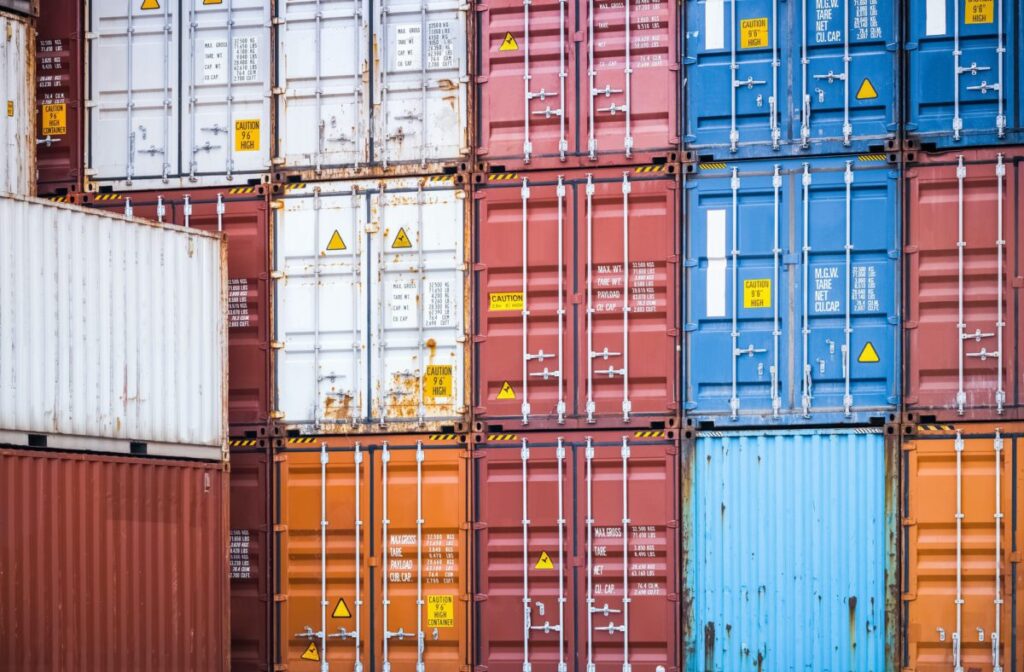
Einführung
In our increasingly interconnected world, the efficient movement of goods is pivotal to global trade and the functioning of our modern society. At the heart of this logistical marvel are cargo containers, the unsung heroes that quietly revolutionized the way we transport goods. In this article, we’ll explore the fascinating world of cargo containers, their history, types, importance, and their impact on global commerce.
The History of Cargo Containers
The concept of containerized cargo isn’t new, but the system we use today was developed in the mid-20th century. The American entrepreneur Malcolm McLean is often credited with the innovation. In 1956, he introduced the first standardized cargo container, a 33-foot-long steel box that could be loaded onto ships, trains, and trucks without unloading its contents. This sparked a revolution in the shipping industry, making it possible to efficiently transport goods from factories to ports, across oceans, and all the way to your local store shelves.
Types of Cargo Containers
Today, cargo containers come in various sizes and types, each designed for specific cargo and transportation needs. The most common types include:
Standard Dry Containers: These are the iconic rectangular steel boxes used for most general cargo, from electronics to clothing. They come in 20-foot and 40-foot lengths.
Refrigerated Containers: Known as “reefers,” these containers are equipped with cooling systems and are crucial for transporting perishable goods like fruits, vegetables, and pharmaceuticals.
Flat Rack Containers: These have collapsible sides and no roof, making them ideal for oversized cargo like machinery and heavy equipment.
Open-Top Containers: They lack a solid roof and are used for tall or bulky cargo that can’t fit into standard containers, such as construction materials.
Tank Containers: Designed to transport liquids, chemicals, or gases, these containers have cylindrical tanks made of stainless steel.
The Importance of Cargo Containers
Efficiency: Cargo containers have streamlined the entire logistics process. The standardized sizes mean that loading and unloading is a breeze, reducing turnaround times at ports and terminals.
Security: Once sealed, cargo containers are extremely secure, making it difficult for unauthorized access or tampering. This has significantly reduced pilferage during transportation.
Protection: Cargo containers protect goods from the elements, ensuring that they arrive in the same condition as when they were loaded.
Global Trade: Without cargo containers, the rapid growth of international trade and the global supply chain wouldn’t be possible. They have driven globalization and increased access to products from all over the world.
Environmental Impact: Containerization has led to more efficient transport systems, which in turn has had a positive impact on reducing transportation-related emissions and energy consumption.
The Impact on Global Commerce
The rise of cargo containers has had a profound effect on the world economy. They’ve made it possible for businesses to tap into a global market and have enabled just-in-time inventory practices that minimize holding costs. Some key impacts include:
Lower Costs: The efficiency of containerization has significantly reduced transportation costs, enabling more affordable goods for consumers.
Market Access: Smaller businesses can now participate in international trade, leveling the playing field and promoting competition.
Supply Chain Integration: Cargo containers have led to a more integrated global supply chain, allowing for more efficient production and distribution processes.
Economic Growth: Ports and logistics hubs have sprung up around the world, driving economic development in many regions.
Schlussfolgerung
Cargo containers are often overlooked, yet they are the lifeblood of global trade and commerce. These simple, standardized boxes have transformed the world of logistics, making it possible for goods to traverse the globe efficiently and affordably. As we continue to navigate the complexities of an interconnected world, let us not forget the unassuming cargo container and its crucial role in shaping the way we live, consume, and do business on a global scale.
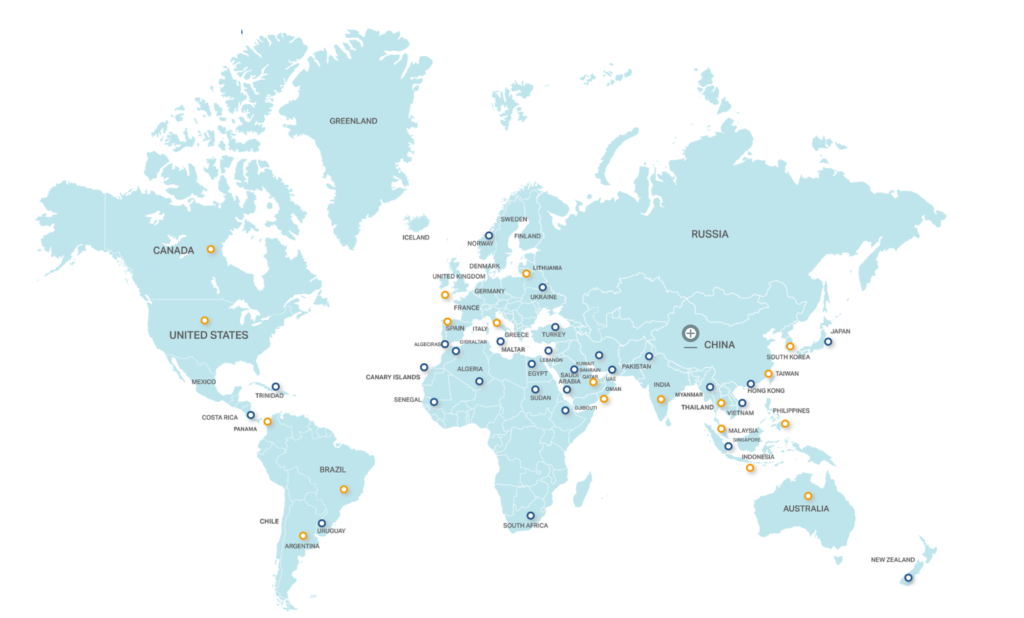
The world has numerous important ports that play a critical role in facilitating global trade and commerce. These ports vary in terms of their size, capacity, and specialization. Here are some of the most significant and strategically important ports from various regions of the world:
- Port of Shanghai – Shanghai, China
- Port of Singapore – Singapore
- Port of Shenzhen – Shenzhen, China
- Port of Ningbo-Zhoushan – Zhejiang, China
- Port of Guangzhou – Guangzhou, China
- Port of Busan – Busan, South Korea
- Port of Hong Kong – Hong Kong
- Port of Qingdao – Qingdao, China
- Port of Rotterdam – Rotterdam, Netherlands
- Port of Antwerp – Antwerp, Belgium
- Port of Hamburg – Hamburg, Germany
- Port of Los Angeles – Los Angeles, USA
- Port of Long Beach – Long Beach, USA
- Port of New York and New Jersey – New York/New Jersey, USA
- Port of Houston – Houston, USA
- Port of Savannah – Savannah, USA
- Port of Charleston – Charleston, USA
- Port of Miami – Miami, USA
- Port of New Orleans – New Orleans, USA
- Port of Vancouver – Vancouver, Canada
- Port of Montreal – Montreal, Canada
- Port of Sydney – Sydney, Australia
- Port of Melbourne – Melbourne, Australia
- Port of Brisbane – Brisbane, Australia
- Port of Tokyo – Tokyo, Japan
- Port of Yokohama – Yokohama, Japan
- Port of Osaka – Osaka, Japan
- Port of Kobe – Kobe, Japan
- Port of Dubai – Dubai, United Arab Emirates
- Port of Jebel Ali – Jebel Ali, United Arab Emirates
- Port of Colombo – Colombo, Sri Lanka
- Port of Mumbai – Mumbai, India
- Port of Chennai – Chennai, India
- Port of Nhava Sheva – Mumbai, India
- Port of Durban – Durban, South Africa
- Port of Cape Town – Cape Town, South Africa
- Port of Alexandria – Alexandria, Egypt
- Port of Suez – Suez, Egypt
- Port of Barcelona – Barcelona, Spain
- Port of Valencia – Valencia, Spain
- Port of Genoa – Genoa, Italy
- Port of Marseille – Marseille, France
- Port of Le Havre – Le Havre, France
- Port of Hamburg – Hamburg, Germany
- Port of Felixstowe – Felixstowe, United Kingdom
- Port of Southampton – Southampton, United Kingdom
- Port of Liverpool – Liverpool, United Kingdom
- Hafen von Istanbul - Istanbul, Türkei
- Hafen von Novorossiysk - Novorossiysk, Russland
- Hafen von Wladiwostok - Wladiwostok, Russland
Bitte beachten Sie, dass dies nur eine Auswahl der wichtigsten Häfen auf der ganzen Welt ist und dass es noch viele weitere Häfen in verschiedenen Ländern gibt, in denen internationaler Handel und Gewerbe abgewickelt werden.
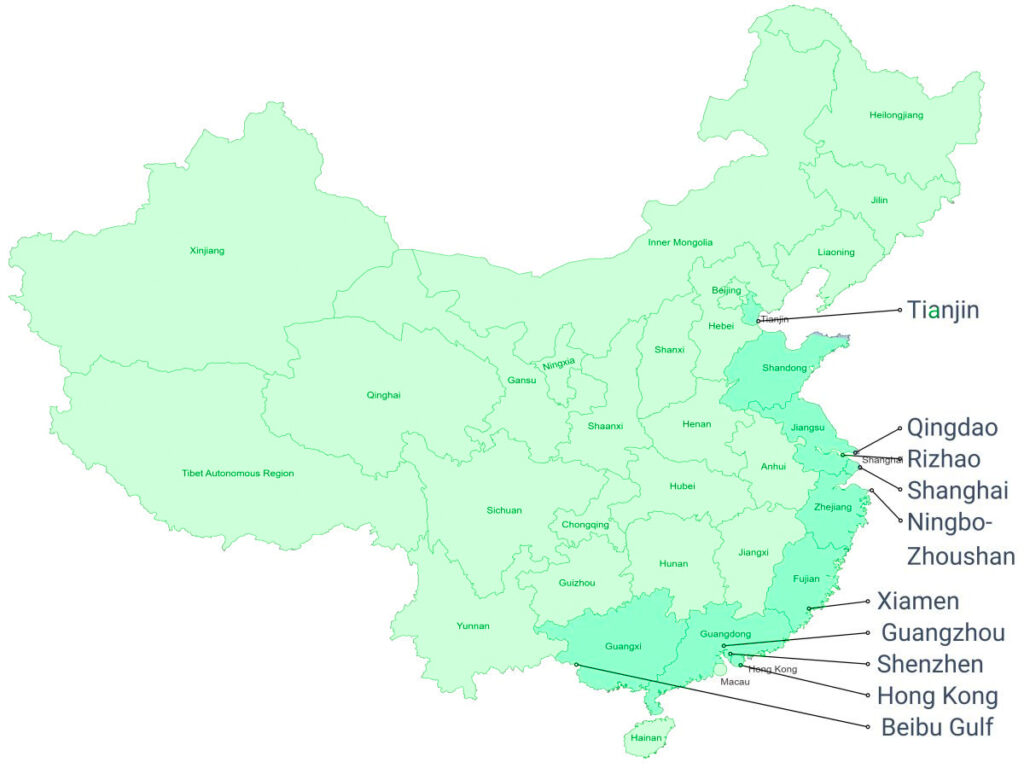
Aufgrund seiner ausgedehnten Küstenlinie und seiner strategischen Bedeutung für den Welthandel verfügt China über ein ausgedehntes Netz von Häfen. Hier sind einige bemerkenswerte Häfen in verschiedenen Regionen Chinas:
Nordchina:
Der Hafen von Tianjin: Der Hafen von Tianjin ist einer der größten und verkehrsreichsten Häfen in Nordchina, in dem Container, Schüttgut und flüssige Massengüter umgeschlagen werden.
Qinhuangdao Port: Der in der Provinz Hebei gelegene Hafen ist auf den Umschlag von Kohle und Schüttgut spezialisiert.
Hafen Dalian: Der in der Provinz Liaoning gelegene Hafen von Dalian ist ein wichtiger Hafen im Nordosten Chinas, in dem Container, Schüttgut und Öllieferungen umgeschlagen werden.
Ostchina:
Hafen von Shanghai: Der größte und verkehrsreichste Hafen Chinas liegt in Shanghai und wickelt eine breite Palette von Gütern ab, darunter Container, Massengüter und Öl.
Hafen Ningbo-Zhoushan: Er liegt in der Provinz Zhejiang und ist einer der größten Containerhäfen der Welt, in dem verschiedene Arten von Fracht umgeschlagen werden.
Hafen Qingdao: Der in der Provinz Shandong gelegene Hafen von Qingdao schlägt Container, Massengüter und Rohöl um.
Hafen Lianyungang: Der in der Provinz Jiangsu gelegene Hafen von Lianyungang ist für den Handel mit ostasiatischen Ländern von entscheidender Bedeutung.
Südchina:
Der Hafen von Shenzhen: Mit dem Yantian-Hafen, dem Shekou-Hafen und dem Chiwan-Hafen ist er ein wichtiger Knotenpunkt für den Außenhandel und einer der bedeutendsten Containerhäfen in China.
Hafen Guangzhou: Er liegt in der Provinz Guangdong und wickelt zusammen mit dem Huangpu-Hafen einen großen Teil des Frachtaufkommens in Südchina ab.
Xiamen Port: Der in der Provinz Fujian gelegene Hafen von Xiamen ist auf den Umschlag von Containern und Stückgut spezialisiert.
Hongkong und Macao:
Der Hafen von Hongkong: Obwohl der Hafen von Hongkong nicht zum chinesischen Festland gehört, ist er ein wichtiger Umschlagplatz und spielt eine bedeutende Rolle im chinesischen Handel.
Der Hafen von Macau: Macau ist zwar in erster Linie für seine Tourismus- und Unterhaltungsindustrie bekannt, verfügt aber auch über einen Hafen für den Frachtumschlag.
Dies sind nur einige Beispiele für die vielen Häfen in China. Chinas umfangreiche Hafeninfrastruktur ist für seine Import- und Exportaktivitäten von entscheidender Bedeutung und trägt wesentlich zum Wirtschaftswachstum des Landes und seiner Rolle im globalen Handel bei.


Die Wahl des richtigen Gehörschutzes ist entscheidend für den Schutz Ihres Gehörs in lauten Umgebungen. Die Wahl des richtigen Gehörschutzes hängt von verschiedenen Faktoren ab, wie z. B. dem Lärmpegel, Ihren speziellen Bedürfnissen, dem Komfort und der Umgebung. Die folgenden Schritte sollen Ihnen bei der Auswahl eines geeigneten Gehörschutzes helfen:
Bewertung des Lärmpegels:
Bestimmen Sie den Lärmpegel an Ihrem Arbeitsplatz oder in Ihrer Umgebung. Möglicherweise benötigen Sie eine professionelle Lärmbewertung, um den Schallpegel genau zu messen. Dies wird Ihnen helfen, das erforderliche Schutzniveau zu ermitteln.
Verstehen Sie die Arten von Gehörschutz:
Machen Sie sich mit den verschiedenen Arten von Gehörschutzprodukten vertraut:
Ohrstöpsel: Kleine, einsetzbare Geräte, die in den Gehörgang eingeführt werden.
Ohrenschützer: Am Kopf getragene Geräte, die die Ohren bedecken.
Pegelabhängige Gehörschützer: Kapselgehörschützer oder Gehörschutzstöpsel, die den Schutz je nach Lärmpegel anpassen.
Kommunikations-Gehörschützer: Ermöglichen die Kommunikation und bieten gleichzeitig Schutz.
Berücksichtigen Sie die Geräuschunterdrückung (NRR):
Achten Sie bei der Auswahl von Gehörschutzstöpseln oder Kapselgehörschützern auf die Lärmreduzierungsrate (NRR). Die NRR gibt an, wie stark das Produkt den Lärm reduziert. Wählen Sie ein Produkt mit einem NRR-Wert, der für Ihre Lärmumgebung geeignet ist.
Passform und Komfort:
Achten Sie auf einen guten Sitz. Ein schlecht sitzender Gehörschutz bietet möglicherweise nicht die erwartete Lärmreduzierung. Probieren Sie verschiedene Größen und Typen aus, um den besten Sitz zu finden.
Bequemlichkeit ist für einen längeren Einsatz unerlässlich. Wählen Sie Produkte, die Sie während Ihrer gesamten Arbeitsschicht bequem tragen können.
Kommunikationsbedürfnisse:
Wenn Sie kommunizieren müssen, während Sie einen Gehörschutz tragen, sollten Sie sich für Produkte mit integrierten Kommunikationsfunktionen entscheiden oder für solche, die sich leicht abnehmen oder anpassen lassen.
Langlebigkeit und Wartung:
Achten Sie auf die Haltbarkeit des Produkts, vor allem wenn Sie in rauen Umgebungen arbeiten. Manche Gehörschutzgeräte sind robuster als andere.
Befolgen Sie die Reinigungs- und Wartungsanweisungen des Herstellers, um Langlebigkeit und Wirksamkeit zu gewährleisten.
Umweltfaktoren:
Berücksichtigen Sie bei der Auswahl des Gehörschutzes Umweltfaktoren wie Hitze, Feuchtigkeit und Staub. Einige Produkte sind für bestimmte Bedingungen besser geeignet.
Ausbildung und Schulung:
Schulung und Aufklärung der Arbeitnehmer über die richtige Verwendung von Gehörschutz. Stellen Sie sicher, dass sie wissen, wie sie ihren Gehörschutz anpassen, tragen und warten müssen.
Einhaltung von Vorschriften:
Vergewissern Sie sich, dass die ausgewählten Gehörschutzprodukte den örtlichen Vorschriften und Normen entsprechen, z. B. ANSI S3.19 in den Vereinigten Staaten oder EN 352 in Europa.
Regelmäßige Tests:
Beurteilen Sie regelmäßig die Wirksamkeit des gewählten Gehörschutzes durch Lärmmessung und Hörtests, um sicherzustellen, dass er einen angemessenen Schutz bietet.
Konsultieren Sie Experten:
Wenn Sie sich nicht sicher sind, welche Gehörschutzprodukte für Ihre speziellen Bedürfnisse geeignet sind, sollten Sie sich von Fachleuten für Arbeitsschutz oder Audiologen beraten lassen.
Denken Sie daran, dass Gehörschutz ein wichtiger Aspekt der Sicherheit am Arbeitsplatz ist. Die Wahl der richtigen Produkte und ihre korrekte Verwendung können dazu beitragen, lärmbedingten Gehörverlust zu verhindern und Ihr Gehör langfristig zu schützen.
 3M
3M Ansell
Ansell Dellta Plus
Dellta Plus Drager
Drager edelrid
edelrid Honeywell
Honeywell JUTEC
JUTEC Seeland
Seeland MSA
MSA Neues Schwein
Neues Schwein Weldas
Weldas